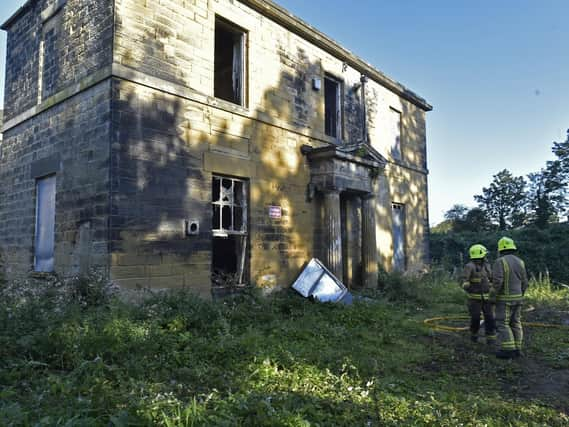Call to protect Leeds' heritage buildings on Notre Dame fire anniversary


Speaking on the first anniversary of the devastating fire at Notre Dame in Paris, specialist fire risk assessor Keith Atkinson has also called for more financial incentives for developers to renovate old buildings.
Mr Atkinson is co-author of the National Database of Fires in Heritage Buildings, which lists blazes reported by the media.
Advertisement
Hide AdAdvertisement
Hide AdIt shows more than 400 fires at historic buildings in the UK in the past year - including 36 in Yorkshire, and three in Leeds.
They include a fire at the derelict Grade II listed Fearnville House, off Dib Lane, Oakwood, has been on Leeds City Council's buildings at risk register since 2009.
Half the building was encompassed by fire and 20 firefighters tackled the blaze in September.
Other notable fires in the region on the database include a fire at former Providence Mill in Leeds, now a Capita site, in October which required 40 firefighters, and a blaze at Ozmo’s takeaway in Chapeltown Road in August.
Advertisement
Hide AdAdvertisement
Hide AdElsewhere, a blaze at the former Walkley Clogs mill in Mytholmroyd on August 1 last year. Damage to the mill, built in 1851, was so extreme that it had to be demolished.
At the height of the blaze fifteen fire engines and 75 firefighters from around West Yorkshire and Lancashire were called to the scene. The cause of the blaze was not established.
While the mill was unoccupied, the database, which is not an exhaustive list, also records fires at occupied heritage buildings, such as that at the 19th century Greenwoods MIll in Halifax in May last year.
The blaze was thought to have begun in a gym in the building, which housed several businesses.
Advertisement
Hide AdAdvertisement
Hide AdUp to 45 firefighters tackled the fire at the mill, which had been in Greenwood family for 140 years.
Mr Atkinson, a heritage specialist who runs a consultancy business near Chester, said: “If it is a modern building that burns down, although disastrous for the owners and occupiers, hopefully it is insured and is easily rebuilt - but you cannot rebuild heritage.”
The best way for these precious assets to be protected, especially from arsonists, he said, was for them to be occupied and properly maintained.
And he called for more financial incentives for developers to renovate old buildings.
Advertisement
Hide AdAdvertisement
Hide AdHe said: “The Government could help with this with grants for bringing an historic building back into use for much-needed housing, and by making renovation and essential maintenance work VAT-free.”
In England, where there have been at least 360 heritage fires in the past year, buildings open to the public need to have a fire risk assessment but historic private homes do not. Mr Atkinson called for this to change.
A Government spokesperson said responsible building owners should take appropriate measures to keep empty buildings safe and secure, adding: “We know heritage buildings hold great value to communities which is why we are investing £95 million to protect, regenerate and adapt these buildings, as well as protecting them through our planning system.”
“Fire poses a real threat to many historic places,” a spokesperson for Historic England warned.
Advertisement
Hide AdAdvertisement
Hide Ad“Historic buildings pose unique challenges - many were built before modern building regulations – but these can be mitigated with appropriate and sensitive fire prevention interventions.”
Cathedral fire prompted global shock
The fire at the gothic cathedral, a year ago today, caused shock and sadness around the world.
Notre Dame, an 850-year-old Unesco World Heritage site, lost its spire and roof during the blaze.
Images of the fire were sent around the world, and in response, almost 1 million Euros (£850m) was donated.
Advertisement
Hide AdAdvertisement
Hide AdFrench president Emmanuel Macron set a five-year goal for its reconstruction.
The fire took place during restoration work, and although the cause remains unknown, a cigarette or electrical fault are among the possible causes.
Just a few days before the anniversary of the fire, a small Good Friday service was held at Notre Dame. The cathedral is still closed to the public during the coronavirus lockdown, but a handful of clergymen took part in prayers, readings and music on Friday morning, with the service broadcast on French television.